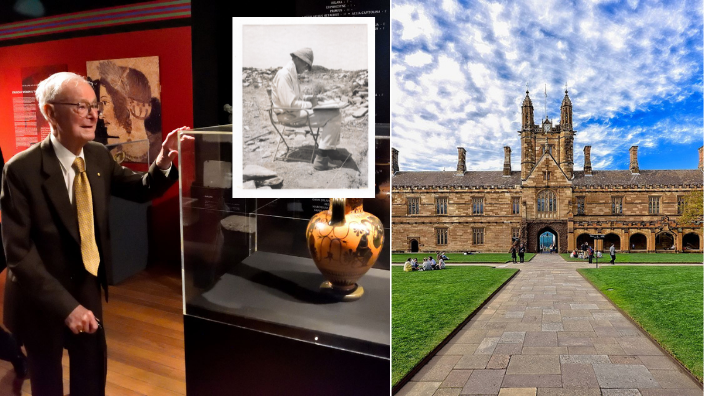The late Professor Alexander Cambitoglou AO has left a bequest of approximately $6 million to his founding Australian Archaeological Institute at Athens (AAIA) facility at the University of Sydney (USYD).
Dr Stavros Paspalas is the director of the AAIA and says his long-time friend and colleague has left his mark on the field of Greek and Mediterranean studies.
“Professor Cambitoglou was one of the most influential figures to have shaped the study of Classical antiquity in Australia,” Paspalas says.
“The bequest upholds his vision for the Institute to promote Greek and Mediterranean studies in Australia.”
Professor Alexander Cambitoglou AO is an antiquities collector and pioneer who was born in Thessaloniki in 1922 and died in Sydney aged 97 in 2019.
Cambitoglou taught at USYD from 1961 through to 1989, curated the Nicholson Museum from 1963 until 2000, and established the AAIA in 1980.
The AAIA has allowed Australia to have its own academic representation in Greece for the first time and has since been a major force in the growth of Australian participation in Greek archaeology.
Paspalas says the bequest continues “the AAIA’s 40 year history of encouraging Australia’s involvement with Greek culture”.
“He firmly believed that a global approach to the subject was needed and aimed to bring the findings of his discipline both to Australian students and the wider public.
“Through sheer dedication and hard work he created a legacy that ensures that Greek studies will thrive in Australia, so bringing his two ’homelands’ together.”
Professor Cambitoglou also donated his collection of Greek and Roman antiquities, from furniture and art, to USYD’s Chau Chak Wing Museum (CCWM).
His collection includes works by Georges Braque, Edgar Degas, Marc Chagall, Russell Drysdale and Brett Whiteley.
“The Nicholson Collection benefitted over four decades from Professor Cambitoglou’s generosity, expertise, and earnest belief in the importance of artefacts to teaching,” CCWM director Dr Paul Donnelly says.
“His influence as an inspiring teacher continues to add to the collection with the recent acquisition (through donated funds in his honour) of a 6th century BCE black-figure amphora made in Athens.”

